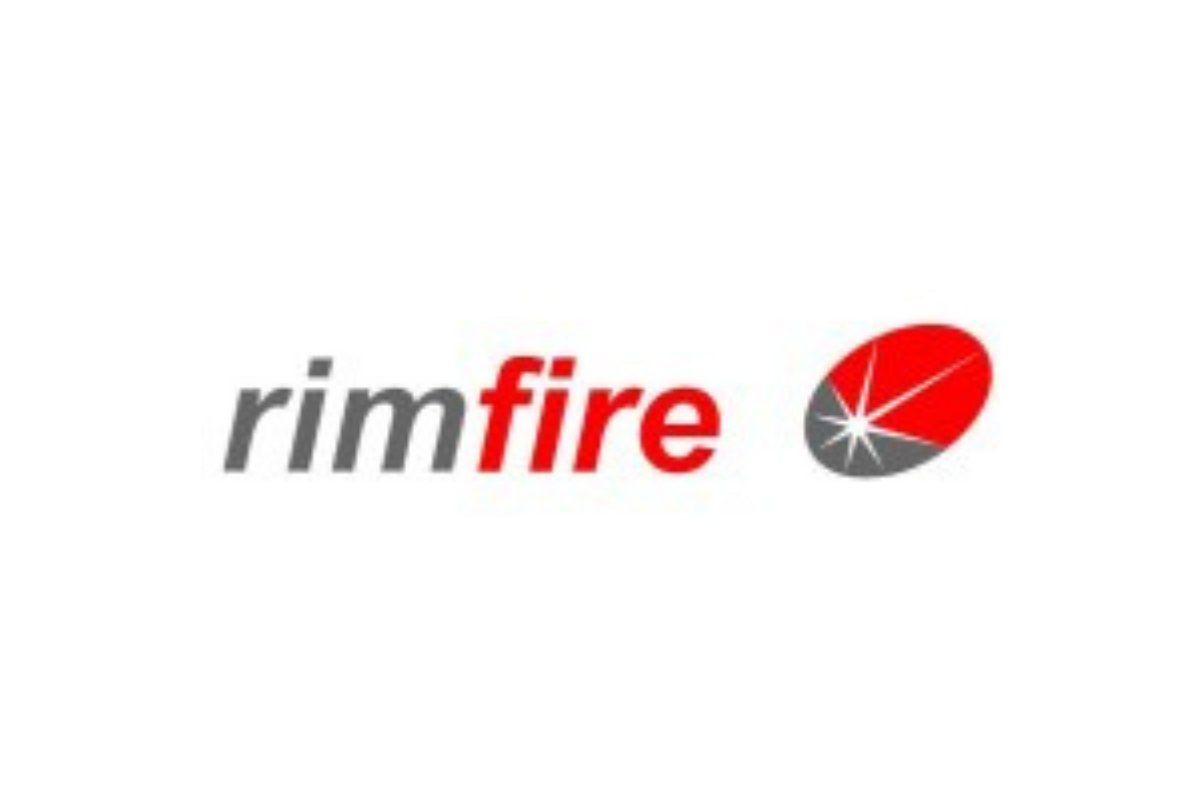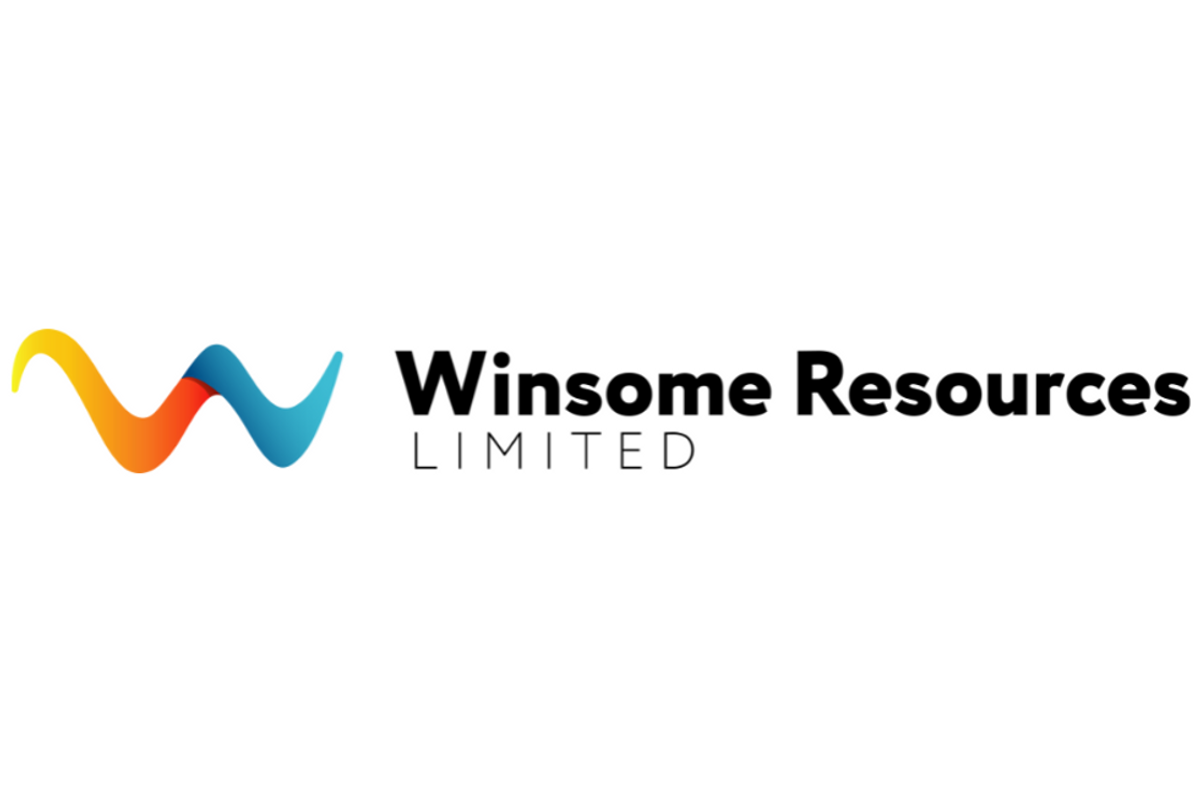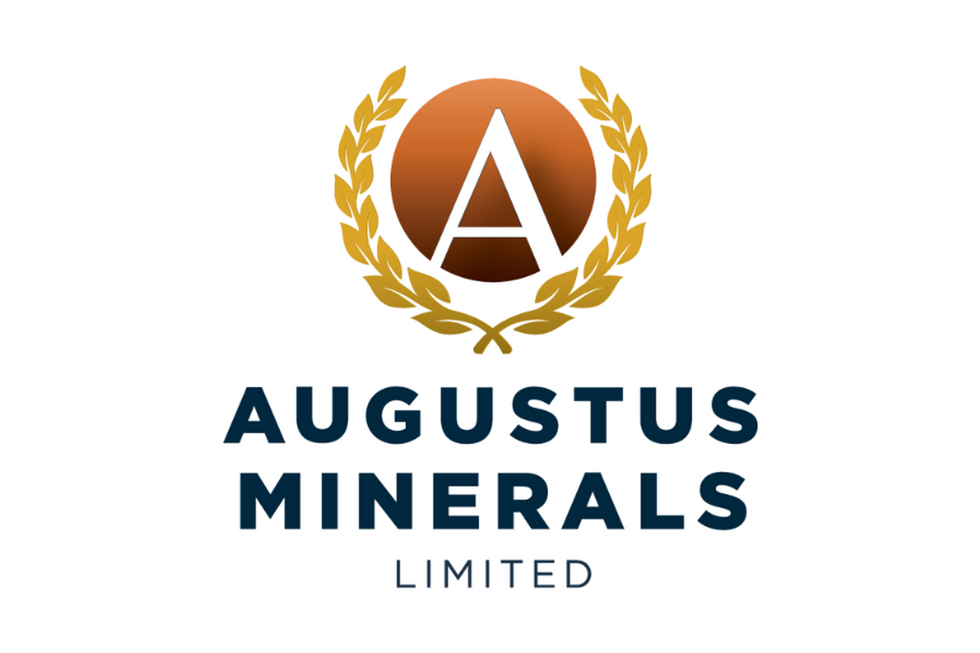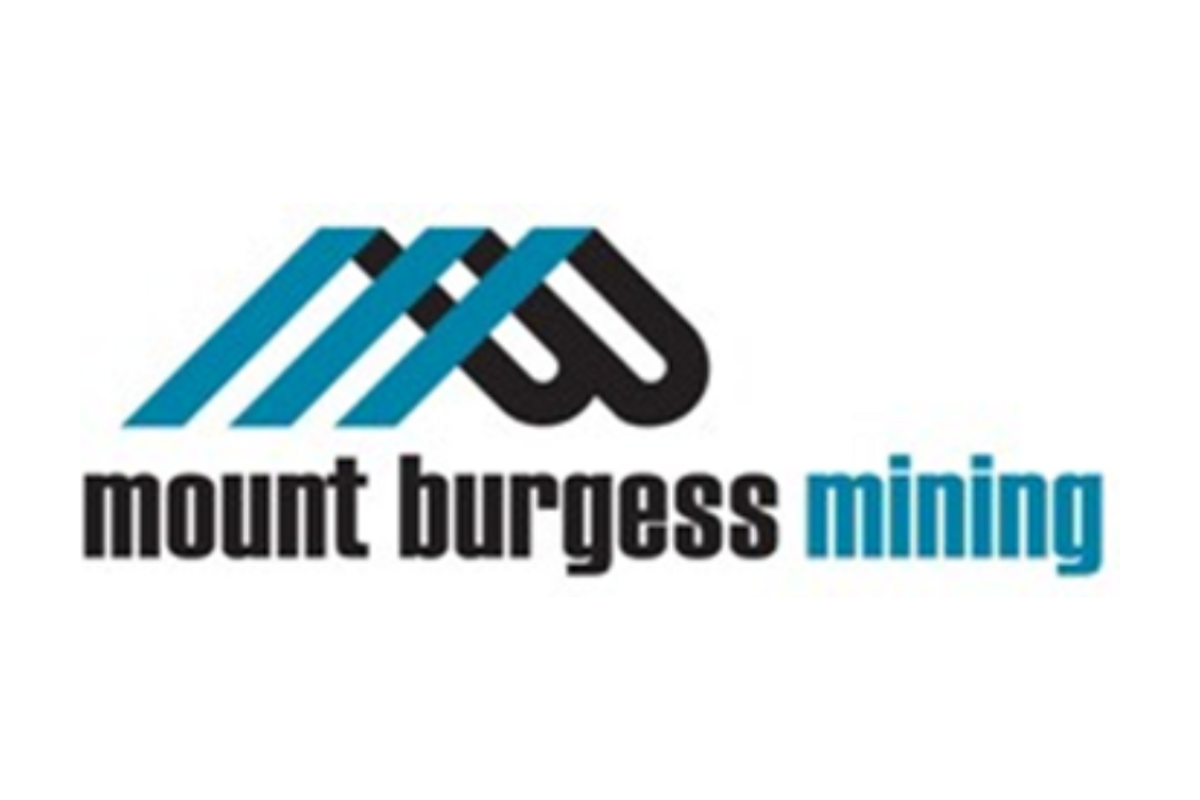- AustraliaNorth AmericaWorld
Investing News NetworkYour trusted source for investing success
- Lithium Outlook
- Oil and Gas Outlook
- Gold Outlook Report
- Uranium Outlook
- Rare Earths Outlook
- All Outlook Reports
- Top Generative AI Stocks
- Top EV Stocks
- Biggest AI Companies
- Biggest Blockchain Stocks
- Biggest Cryptocurrency-mining Stocks
- Biggest Cybersecurity Companies
- Biggest Robotics Companies
- Biggest Social Media Companies
- Biggest Technology ETFs
- Artificial Intellgience ETFs
- Robotics ETFs
- Canadian Cryptocurrency ETFs
- Artificial Intelligence Outlook
- EV Outlook
- Cleantech Outlook
- Crypto Outlook
- Tech Outlook
- All Market Outlook Reports
- Cannabis Weekly Round-Up
- Top Alzheimer's Treatment Stocks
- Top Biotech Stocks
- Top Plant-based Food Stocks
- Biggest Cannabis Stocks
- Biggest Pharma Stocks
- Longevity Stocks to Watch
- Psychedelics Stocks to Watch
- Top Cobalt Stocks
- Small Biotech ETFs to Watch
- Top Life Science ETFs
- Biggest Pharmaceutical ETFs
- Life Science Outlook
- Biotech Outlook
- Cannabis Outlook
- Pharma Outlook
- Psychedelics Outlook
- All Market Outlook Reports
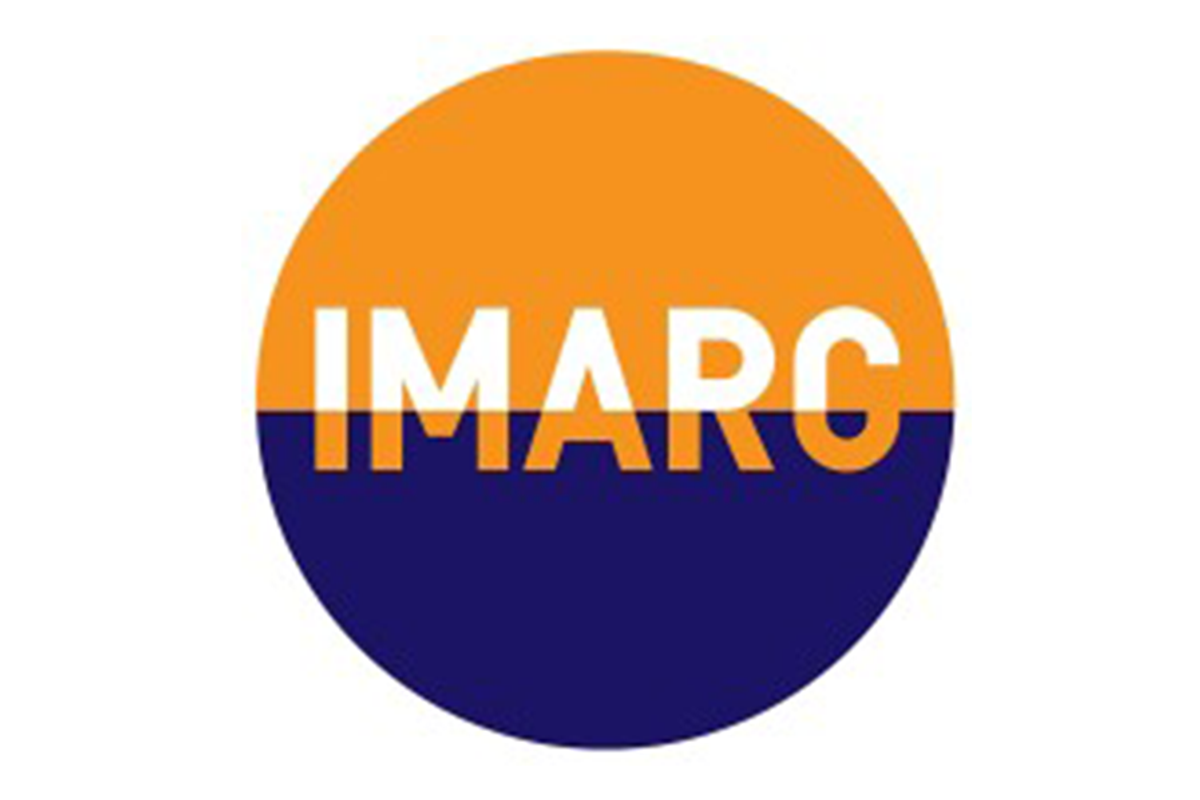
Geopolitics, Skills, Workplace, Social License and Inclusion: Experts Debate the Big Challenges Facing Australian Mining
Australia has a “once in 100-year" opportunity to play a key role in providing minerals to support the global energy transition, the International Mining and Resources Conference (IMARC) in Sydney has been told - but the prospect is not without its challenges.
The hurdles facing the Australian mining industry over the past few years have not been insignificant, ranging from geopolitical disruptions to supply chain constraints and unprecedented weather events affecting production across the country.
Against this backdrop, some of Australia’s leading mining figures gathered on Day 1 of IMARC to discuss the Challenges and Opportunities for the Australian Mining and Resources Industry and how to address them.
Workforce Shortages/Skills Gap
The Australian economy is facing one of the toughest skills and labour shortages in a generation, and the mining industry has not been immune, with staffing deficiencies across a range of occupations, from drivers to mining engineers and geologists.
Chief Executive Officer of Austmine Christine Gibbs Stewart said with technology advancing as rapidly as it is, it’s difficult to know what skills the industry will require for the future.
“However, one of the ways we can focus on attracting the relevant skills we need is by telling our industry’s story better in terms of how innovative we are. If we all get out there and talk about how technologically advanced we are, I think we’ll attract more skills and people to our workforce,” Ms Gibbs Stewart said.
“Just look at what’s happening in society in general, whether that be asset management, managing the workforce, safety, automation, robotics, digital data and analytics; the mining industry is really at the forefront of technology, and we should be promoting that.”
CEO of the Australasian Institute of Mining and Metallurgy Stephen Durkin said building workforce capacity and capability must be urgently addressed before it becomes a serious issue for the sector.
“With 20% of our industry – well over 100,000 people – being tertiary qualified professionals, we are dependent on this workforce to do the work in front of us and shape the future of our industry,” Mr Durkin said.
“The decline in universities offering traditional mining courses presents a real threat, hence why we’re focusing on working with undergraduates to educate them about what a career in mining is really all about. Businesses should also deliver content to those in the industry, and those looking to join, to ensure we continue to have the capability essential to support future growth.”
Political Impacts
Geopolitics is broadly acknowledged as one of the most significant issues impacting the mining sector in 2023, with the war in Ukraine, climate events and new governments – both locally and internationally – driving substantial constraints.
Rapidly changing geopolitical dynamics are causing dramatic shifts in the supply and demand of minerals globally, and given Australia relies so heavily on trade relationships and export markets, what happens across the shores can have significant ramifications locally.
Within Australia, according to CEO of the NSW Minerals Council Stephen Galilee, there is always an inherent political risk associated with the expansion of the mining industry.
“The politicians developing these mining strategies have to be wary of the fact that whether they’re deciding to modify, extend or close a mine, there will always be some kind of adverse reaction from somewhere within the community,” Mr Galilee said.
“The people calling the shots politically need to be able to back up what they’ve decided to do; there needs to be a political will to take that risk and a desire to prove they’re legitimate about the critical minerals strategies they’re releasing.”
Diversity and Inclusion in the mining industry
CEO of the Australasian Institute of Mining and Metallurgy Stephen Durkin says diversity and inclusion within the mining sector remains a significant challenge for the industry.
He says gender disparities, a lack of racial and ethnic diversity, discrimination and harassment, the perception of limited access to opportunities and safety concerns are a drag on the industry’s reputation and remain an ongoing concern for companies.
“The brutal reality is that bullying and harassment within our industry continues to be rife, and many continue to be in denial about the issue,” Mr Durkin said.
“The lack of representation of women in our industry remains at unacceptably low levels, and we will continue to struggle to connect with the public at large – and younger people in particular – until our industry reflects broader community expectations.”
Mitchell Hooke AM, Chair of Partners in Performance, said another consideration the industry must focus on is the mental health and wellbeing of employees.
“Our industry has always regarded occupational health and safety as our number one value and priority. But we've always looked at that through the physical aspects,” Mr Hooke said.
“When it comes to harassment, bullying and violence, we don’t need more legislation and laws to address that, because it’s a criminal activity. What we do need is changes in attitudes and behaviour, and you’re only going to get that when you build the kind of culture around your workplaces with that direct engagement.
“The psychological health of our workers is absolutely critical to building a stronger industry.”
Deputy Chief Executive Officer of AREEA Tara Diamond added to this, saying the efforts of employers to create a more diverse workplace are ongoing.
“Since June 2022, when the Western Australian government released the ‘Enough is Enough Sexual Harassment Against Women in the FIFO Mining Industry’ report, many organisations have publicly released company specific workplace culture and behaviours audits that detail extensive recommendations as both a proactive step, but also a step to mitigate further risks to our industry’s to reputation,” Ms Diamond said.
Successful Placement
Rimfire Pacific Mining (ASX: RIM, “Rimfire” or “the Company”) is pleased to advise that it has received firm commitments to raise $1.15M through a Share Placement pursuant to Section 708 of the Corporations Act (Cth).
Highlights
- Firm commitments received to raise $1.15M through a share placement at an issue price of $0.025 (2.5 cents) which represents a 10.7% discount to the last closing price.
- Placement supported by new and existing shareholders
- Exploration activities on Broken Hill copper – cobalt targets to be accelerated following receipt of placement funds
The proceeds of the share placement will be used to accelerate exploration of copper – cobalt targets at the Company’s 100% - owned Broken Hill Project and provide for general working capital.
Commenting on the Placement, Rimfire’s Managing Director Mr David Hutton said:“We are thankful for ongoing shareholder support in this placement by new and existing shareholders.
In conjunction with funding from our scandium exploration partner – GPR, these placement funds will underpin a busy second half to the year, with maiden scandium JORC Resources planned for the Melrose and Murga scandium prospects, further metallurgical work for Melrose as well as diamond drilling of the Bald Hill copper - cobalt prospect at Broken Hill”.
Placement Details
The placement comprises the issue of a total of 45,800,000 fully paid ordinary shares at an issue price of $0.025 (2.5 cents) per share, raising $1.15M to sophisticated investors eligible under section 708 of the Corporations Act (Cth).
The issue price of the current placement represents a 10.7% discount to the closing share price on 28 June 2024 and a 150% premium to the issue price of the Company’s last placement (see Rimfire’s ASX Announcement dated 14 December 2023).
In addition, 15,266,665 free attaching unlisted options are being issued on a one (1) for three (3) basis, being one (1) free attaching unlisted option for every three (3) new shares subscribed for and issued under the placement with an exercise price of $0.05 (5 cents) each, and an expiry date of 31 December 2025.
The 45,800,000 placement shares will be issued under Rimfire’s existing ASX Listing Rule 7.1A placement capacity and the 15,266,665 unlisted options will be issued under Rimfire’s existing ASX Listing Rule 7.1 placement capacity.
The new shares will rank equally with existing Rimfire fully paid ordinary shares quoted on the ASX.
Settlement of the placement is expected to occur on or about Monday 8th July 2024 and shortly thereafter the Company will make an application to the ASX seeking quotation of the placement shares.
Click here for the full ASX Release
This article includes content from Rimfire Pacific Mining Limited, licensed for the purpose of publishing on Investing News Australia. This article does not constitute financial product advice. It is your responsibility to perform proper due diligence before acting upon any information provided here. Please refer to our full disclaimer here.
Winsome Receives MCS Grant from Government of Québec
HIGHLIGHTS
- Winsome’s subsidiary Lithium Winsome Adina Inc has been granted circa C$130,000 (A$146,000) by the Quebec Government
- The grant has been offered under the Mineral Exploration Support Program for Critical and Strategic Minerals, overseen by the Quebec Ministry of Natural Resources and Forests.
- The grant will contribute towards the ongoing metallurgical testwork programme being conducted on samples from Adina.
- Testwork will inform the forthcoming project studies for Adina which are anticipated to be published in 2H 2024 and will include evaluation of the Company’s recent option to acquire the Renard Operation some 60km from Adina.
The grant has been offered under the Mineral Exploration Support Program for Critical and Strategic Minerals (Programme de soutien à l’exploration minière pour les minéraux critiques et stratégiques 2021‑2024 in French or PSEM-MCS) which is overseen by the Quebec Ministry of Natural Resources and Forests (Ministère des Ressources naturelles et des Forêts or MRNF).
WINSOME’S MANAGING DIRECTOR CHRIS EVANS SAID:
“We would like to thank the Gouvernement du Québec for the award of this grant towards our metallurgical testwork programme. We acknowledge the desire of the Quebec Government to develop the critical and strategic minerals industry within the province, including investigating the potential for downstream and other value-adding initiatives, and we are pleased that our Adina project has been recognised as one of the premier lithium development opportunities within Québec.
We are looking forward to this being the first of many collaborations between the Quebec Government and Winsome Resources as we progress the development of Adina for the benefit of key stakeholders within the region”
In March 2020, the Government of Quebec announced a five-year investment of $90 million to develop critical and strategic minerals (CSMs). In October 2020, it launched the Quebec Plan for the Development of Critical and Strategic Minerals 2020‑2025 (QPDCSM), to oversee the interventions to make Québec a leader in CSM production, processing and recycling, in partnership with regional and Indigenous communities. The PSEM-MCS is part of the QPDCSM and was established to provide assistance to CSM exploration projects, based on their contribution to CSM exploration in Québec and the quality of the exploration model.
Click here for the full ASX Release
This article includes content from Winsome Resources, licensed for the purpose of publishing on Investing News Australia. This article does not constitute financial product advice. It is your responsibility to perform proper due diligence before acting upon any information provided here. Please refer to our full disclaimer here.
Unconformity Uranium Drill Targets Identified from 2024 Geophysical Data
Basin Energy Limited (ASX:BSN) (‘Basin’ or the ‘Company’) is pleased to provide an update on the winter 2024 geophysical program that was conducted at the Marshall and North Millennium Uranium Projects (‘Marshall’, ‘North Millennium’ or the ‘Projects’), located in the southeastern part of the uranium-rich Athabasca Basin, refer to figure 3. The Southeastern Athabasca hosts some of the highest-grade uranium mines, with recent significant unconformity-related mineralisation discoveries occurring over the past few years1,2.
Key Highlights
- Final data received and interpretation completed for the ground electromagnetic geophysical surveys from the winter 2024 program at the Marshall and North Millennium projects.
- Several conductive anomalies identified at Marshall, located above and below the unconformity, consistent with regional exploration model.
- Stacked anomalies concurrently with multigenerational geophysical data provides a base to assess the exploration targets and refine drillhole targets.
- The projects are located 15 kilometres from the majority Cameco owned Millennium deposit, and just 40km from the world class McArthur River mine.
- Basin remains funded for the next round of field exploration.
The ground electromagnetic successfully identified 3 main targets which confirms the geological and exploration model. Of note is Target 1 (Figure 1), where modelled EM plates below the unconformity align with a sandstone ZTEM anomaly, which is interpreted to be alteration within sandstone. The identification of these targets is encouraging and consistent with regional trends in the southeastern Athabasca and provides increased confidence in drill hole targeting. Basin is currently reviewing options and priorities of how to progress exploration of these confirmed targets.
Basin’s Managing Director, Pete Moorhouse, commented:
“Conducting ground geophysical surveys on Marshall and North Millennium was a milestone in advancing these underexplored projects in Basin’s uranium portfolio. The form of these anomalies is highly encouraging given the proximity to some of the world’s largest uranium deposits.”
Key results
Following the encouraging conductive anomalism highlighted by the 2023 3D inversion of two historic airborne Electromagnetics (Z‐Tipper Axis) (“ZTEM”) datasets partially covering the current North Millennium and Marshall projects3,4, Basin contracted Discovery International Geophysics5 to carry out ground Stepwise Moving Loop Transient Electromagnetic (‘Ground EM’) surveys on areas of immediate interest within the Projects.
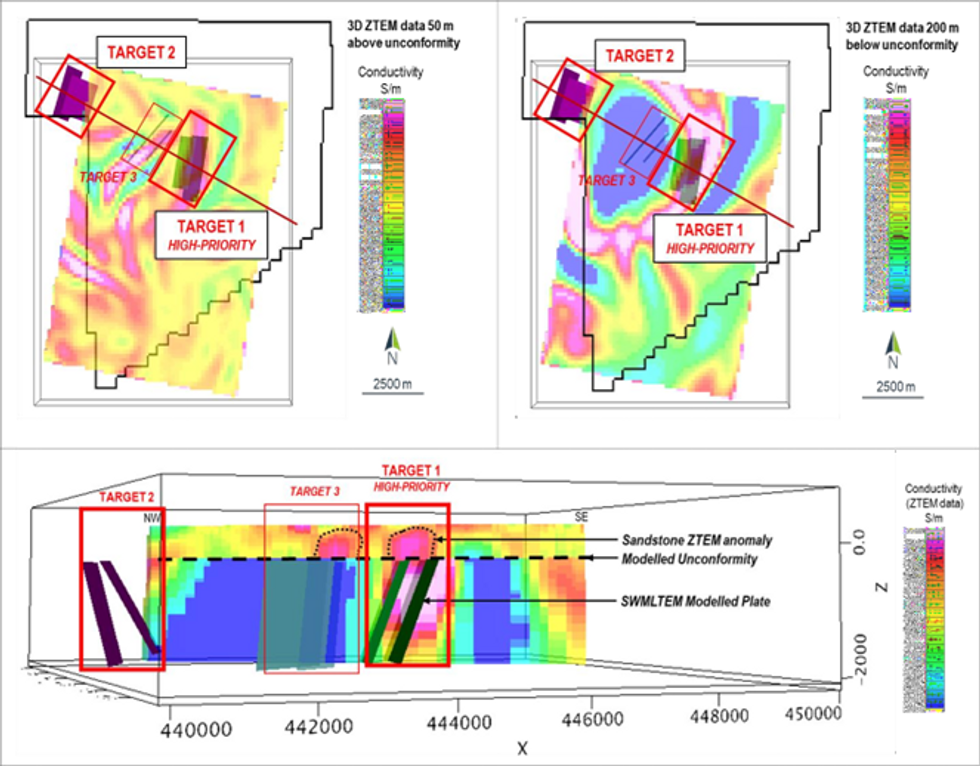
The 2024 Ground EM survey data returned six conductive anomaly picks producing three main target areas (Figure 1). The anomalies correlate strongly with the southern edge of the circular ZTEM conductive anomaly at Marshall and the interpreted northern edge of the circular anomaly identified in the historic data. A weaker EM pick was also interpreted centred between the two prominent ZTEM conductivity anomalies.
Three-dimensional modelling using Maxwell produced six electromagnetic conductive plates within the basement stratigraphy, all below the unconformity (Figure 1). The two southeastern plates are clearly aligning with a conductive sandstone ZTEM anomaly identified from the historic data, which is above the interpreted unconformity. This is interpreted as potential basal sandstone alteration proximal to the EM anomalies and constitutes a high-priority drill target area, refer figure 2.
Click here for the full ASX Release
This article includes content from Basin Energy, licensed for the purpose of publishing on Investing News Australia. This article does not constitute financial product advice. It is your responsibility to perform proper due diligence before acting upon any information provided here. Please refer to our full disclaimer here.
Airborne EM over Multiple Targets on Ti-Tree Project
Augustus Minerals (ASX: AUG; “Augustus” or the “Company”) is pleased to announce that an airborne Versatile Time Domain Electromagnetic (VTEM) Max survey will be undertaken at three areas within the 3,600km2 Ti-Tree Project in the Gascoyne Region. The survey is scheduled for August.
- Augustus Minerals has contracted UTS Geophysics to conduct a VTEM Max survey over several Copper, Cu-Ni-PGE, Zn-Pb-Ag and Uranium targets along the money Intrusion and within proximity of the prospective 85k long Ti-Tree Shear.
- The surveys will cover:
- The Money Intrusion, prospective for Cu-Ni-PGE mineralisation.
- Copper Ridge and Nics Bore over anomalous Copper Drilling results
- The Coo Creek prospect where drilling by Augustus in 2023 identified strongly anomalous Zn-Pb-Ag mineralisation.
- The Munaballya Well North area which shows potential for economic Uranium mineralisation.
- The surveys will help to advance the untapped potential of the Ti-Tree project to host economic mineralisation of multiple commodities.
Andrew Ford, GM Exploration
“The VTEM survey will provide key targeting data over three highly prospective and different prospects with potential for multiple commodities. Whilst the high prospectivity for copper mineralisation has been well documented, the addition of uranium and Broken Hill base metal style mineralisation highlights the quality of the underexplored Ti-Tree project”.
VTEM
UTS Geophysics has been engaged to conduct a helicopter borne VTEM Max survey comprising 646-line km over three separate survey areas. The system is excellent for locating discrete conductive anomalies as well as mapping lateral and vertical variations in resistivity which helps map structure, alteration and rock type. The system also collects magnetic data through a caesium magnetometer. The transmitter/receiver loop is suspended on a cable approximately 40m below the helicopter (Figure 1).
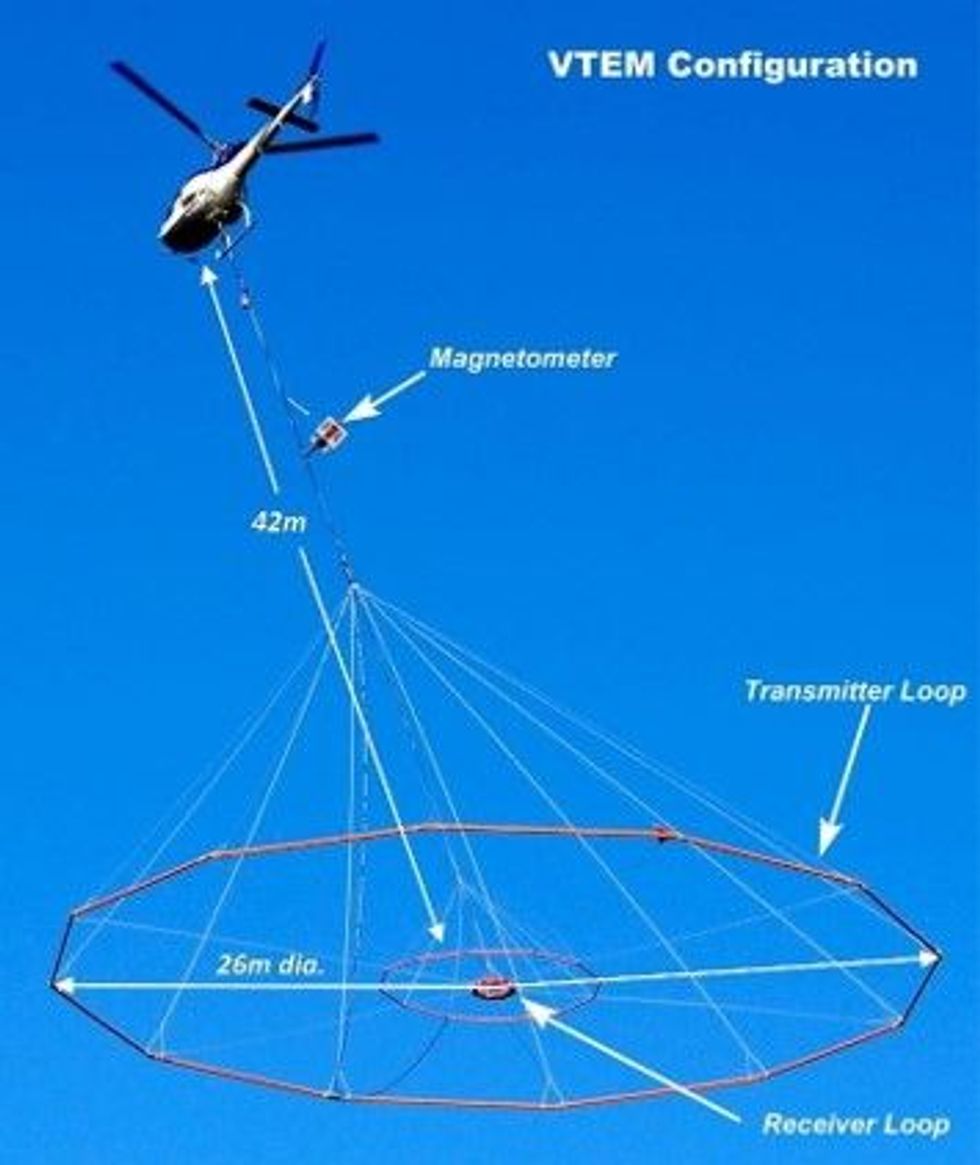
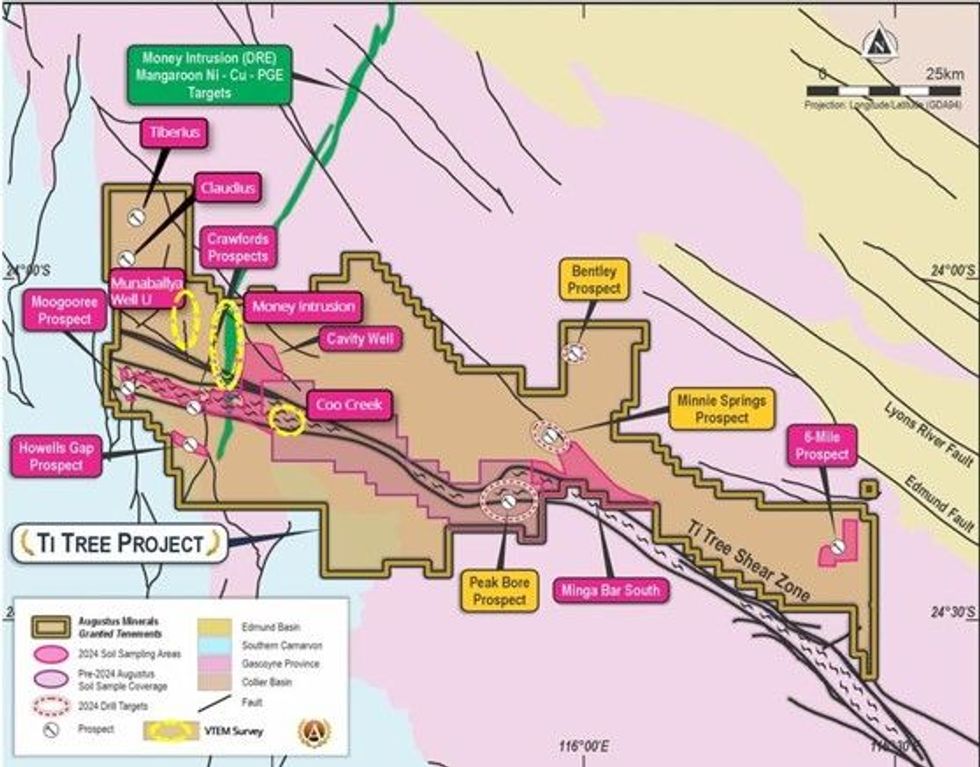
Money Intrusion
The Money Intrusion, which has proven potential to host Ni-Cu-Co-PGE (platinum group elements), is part of the regional Mundine Well Dolerite Suite, a regionally extensive dolerite (strike length >80km). This extensive mafic intrusion, which is comprised of a variety of lithologies, including gabbro in the core, olivine dolerite on the chilled lower contact or keel and fine-grained dolerite on the outer edges. Mapping, aeromagnetics and multi-spectral imagery show that the Money Intrusion within the Ti-Tree Project covers a strike length greater than 16km, reaching widths >600m in the north of E09/23241.
Click here for the full ASX Release
This article includes content from Augustus Minerals, licensed for the purpose of publishing on Investing News Australia. This article does not constitute financial product advice. It is your responsibility to perform proper due diligence before acting upon any information provided here. Please refer to our full disclaimer here.
Kihabe-Nxuu Polymetallic Project Silver/Gallium Potential
In response to recent enquiries, Mount Burgess Mining Ltd (MTB:ASX, the “Company”) is pleased to update the silver potential of the Kihabe-Nxuu Project (“Project”) in Botswana. With the recent increase in silver prices and multiple forecasts predicting a structural deficit over the coming years, the importance of the silver content of the Project has increased substantially.
HIGHLIGHTS
- Kihabe Mineral Resource Estimate (21 million Tonnes at 2.0% ZnEq1) estimated to contain 5.4 million Oz of silver.
- Silver currently trading at or near 10-year highs at US$30 per Ounce2 (Figure 1)
- Estimated silver deficit of 215.3 million troy ounces in 20243
- Individual silver intersections at the Kihabe Deposit include:
- 7m @ 984g/t (31.6oz/t) from 97m incl. 1m @ 4,076 g/t (131oz/t) from 97m (KDD114)
- 7m @ 477g/t (15.3oz/t) from 63m incl. 1m @ 1,510 g/t (48.5oz/t) from 65m (KIH007)
- 50 holes in the SW domain, over a strike length of 550m, average 49.7g/t (1.6oz/t) Ag4
- 31 holes in the NE domain, over a strike length of 900m, average 63.67g/t (2.0oz/t) Ag5
- Metallurgical test work underway to determine onsite recovery of Gallium and Germanium not yet included in the Kihabe Mineral Resource Estimate. Kihabe Deposit has a large Exploration Target of up to 100 million tonnes @12 g/t Gallium.
- Gallium currently trading at US$811.2/kg6
The Kihabe Deposit has two significant silver domains with shallow high-grade intersections including 7m @ 984g/t from 97m and 7m @ 477g/t from 63m, previously announced in June 2021. The SW and NE domains require further infill and extensional drilling. The Company is taking this opportunity to update the market by releasing individual metres over 93g/t (3oz/t) in the following tables. Individual metres of 311g/t (10oz/t) and over, are highlighted in green. Refer to attached Figures outlined in Drill Section headings in the table to review the intersections from which the individual metres have been extracted.
The 6 million tonne Nxuu Mineral Resource Estimate, 7kms to the East of the Kihabe Deposit, contains a further 1,040,000 ounces of silver.
The Company is also undertaking metallurgical test work to determine the recovery of Gallium and Germanium onsite. Results will be released once available. Further drilling is required before the Gallium Exploration Target (refer ASX Release 6 July 2023) and Germanium can be included in the Kihabe Mineral Resource Estimate. Gallium and Germanium have been included in the Nxuu Mineral Resource Estimate.
Chairman of Mount Burgess Mining Mr. Nigel Forrester commented:
“The importance of the silver content of the Kihabe-Nxuu Project is supported by its recent significant price increase to 10-year highs. The Company sees this as being positive for the Project as the expectation is that silver demand will continue to increase due to the metal’s green technology use in solar panels, batteries and wind turbines.
The importance of the gallium content of the Kihabe-Nxuu project is also supported by its recent significant 272% price increase to US$811.2/kg since January 2020. The increase is primarily due to gallium nitride chips required to replace silicon chips not able to cope with the increase in heat generated from the increase in 5G communication traffic in computers, laptops and smart phones.”
Click here for the full ASX Release
This article includes content from Mount Burgess Mining NL, licensed for the purpose of publishing on Investing News Australia. This article does not constitute financial product advice. It is your responsibility to perform proper due diligence before acting upon any information provided here. Please refer to our full disclaimer here.
Registration Opens for the Inaugural Mining, Metals and the Circular Economy Conference
Early bird delegate passes are now on sale for the inaugural Mining, Metals and the Circular Economy conference, scheduled to take place at the ICC Sydney on 29 & 30 October 2024.
The launch of this event is timely, as circularity in the mining and metals industry is important for reaching net-zero goals and global decarbonisation, while also addressing the rising demand for minerals required for future technologies and other vital materials.
Organised by Beacon Events, the Mining, Metals and the Circular Economy conference will be co-located with the International Mining and Resources Conference (IMARC), providing attendees with unprecedented access to industry experts and thought leaders in the mining sector, fostering a dynamic exchange of innovative ideas and best practices. What sets this conference apart is that it is the world’s first and only event to explore the global context of process and product circularity throughout the mining industry’s value chain.
Sherene Asnasyous, Event Director at Beacon Events, explained that the strategic development of Mining, Metals and the Circular Economy is about helping mining companies, as well as their customers, partners, and suppliers, better comprehend their roles within the circular value supply stream.
“As a powerful tool to reduce waste and pollution, circularity needs to be a priority for mining producers and their supply chains. It is also crucial for meeting the growing demand for minerals needed for new technologies, construction, and other industries, as it extends the lifespan of metals beyond their initial use. We encourage companies involved in the mining value chain to join us in this forum to explore ways to reduce waste at all stages of a mine site’s lifecycle and capitalise on the economic benefits of extracting valuable materials from waste and metals recycling,” Ms. Asnasyous said.
The introduction of Mining, Metals and the Circular Economy to the mining value chain's events calendar offers businesses a focused and in-depth opportunity to implement circular economy practices as a solution to address the current environmental and supply chain challenges faced by the industry.
“Mining, Metals and the Circular Economy is a valuable opportunity for industry players to come together because no single organisation has all the solutions to applying circularity to their business operations. It requires diverse insights and skills, as well as collaboration, to help find better ways to mine and be more resource efficient. The conference program features international and local experts from leading mining companies, consultancy firms, industry associations, and academia. Our speakers will cover a range of important topics including mine rehabilitation, waste commercialisation, policy and regulation, recycling metals, and circularity tracking and reporting,” Ms. Asnasyous said.
Alan Young, Senior Advisor at Circular Economy Leadership Canada and a panellist on Day 1 of the conference, underscores the importance of implementing circular economy principles across all participants in the minerals value chain.
"With the minerals-intensive reality of the green energy transition, there is an urgent imperative to re-invent the way we access and use metals, from the mine site to their end use in cars, batteries, computers and renewable energy systems. An integrated circular economy framework allows all participants in minerals value chains to contribute to the vision of a zero waste/zero carbon approach to these vitally important materials, while creating a massive economic benefit for society,” Mr. Young emphasised.
Gustavo Roque, General Manager – Future Use at Vale in Brazil, another international speaker headlining the conference, is looking forward to presenting on reclaiming post-mining landscapes to leverage social, economic and natural assets.
“My participation in the event will facilitate valuable exchanges of ideas and foster collaborations that can propel the industry toward more sustainable and efficient practices. Engaging with global experts and leaders at these events aligns perfectly with our objectives to redefine the mining landscape through innovation,” Mr. Roque said.
Other notable presenters and panelists at Mining, Metals and the Circular Economy include:
- Petar Ostojic, Founder, Centre Innovation and Circular Economy (Chile)
- Ashleigh Morris, Co-Founder, Coreo
- Dr. Helen Degeling, Project Acquisition Manager, Cobalt Blue Holdings
- Associate Professor Anita Parbhakar-Fox, Group Leader - Mine Waste Transformation through Characterisation, Sustainable Minerals Institute
- Julian Treger, President, Chief Executive Officer & Director, CoTec (Canada)
- Dr. Ana Fernandez-Iglesias, Director Sustainable Mining Portfolio, ArcelorMittal Mining R&D (Spain)
- Graham Arvidson, Chief Executive Officer, Australian Vanadium Ltd
- Andree Henríquez, Chief Executive Office, CircularTec (Chile)
- Allan Morton, Executive Director, enviroMETS Qld
- Katharine Hole, Chief Executive Officer, Association for the Battery Recycling Industry Australia
- Megan Jones, Co-Founder, Circular PV Alliance
- Lina Goodman, Chief Executive Officer, Tyre Stewardship Australia
In addition to the conference, there will be a supplier showcase allowing delegates to source the latest products and services that can help them transition to circular business models.
Early bird delegate passes are now available and can be purchased at miningcircularity.com.
###
Photos to accompany the media release can be found here.
About Mining, Metals and the Circular Economy
The inaugural Mining, Metals and the Circular Economy conference is an invaluable platform for industry stakeholders to gain a comprehensive understanding of the role, impact and benefits of a circular economy across the entire mining value chain. Taking place alongside International Mining and Resources Conference (IMARC) on 29 and 30 October, this is the world's first and only conference with discussions on the global context of both process and product circularity in the mining industry’s supply chain. Mining companies of all sizes and their suppliers and customers will benefit from the conference to better understand the roles they play in a circular value supply stream.
Latest News
Latest Press Releases
Related News
TOP STOCKS
Investing News Network websites or approved third-party tools use cookies. Please refer to the cookie policy for collected data, privacy and GDPR compliance. By continuing to browse the site, you agree to our use of cookies.
